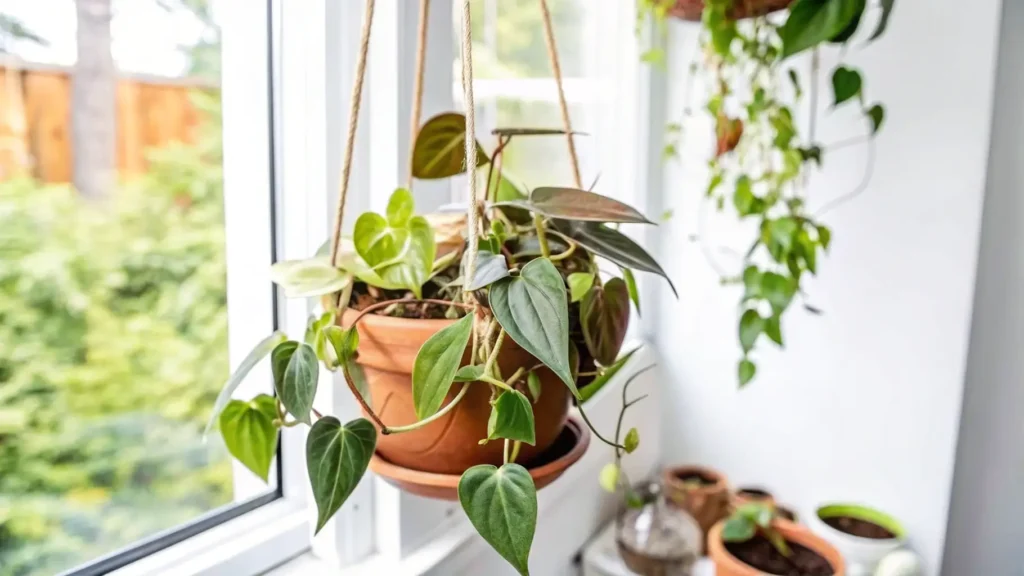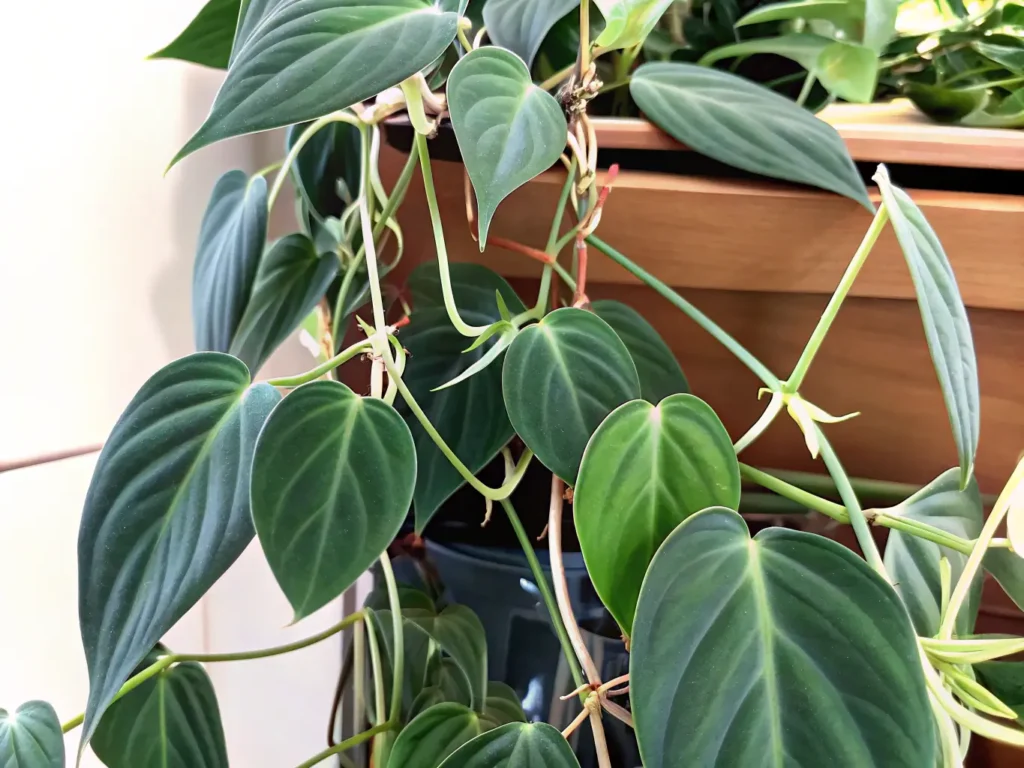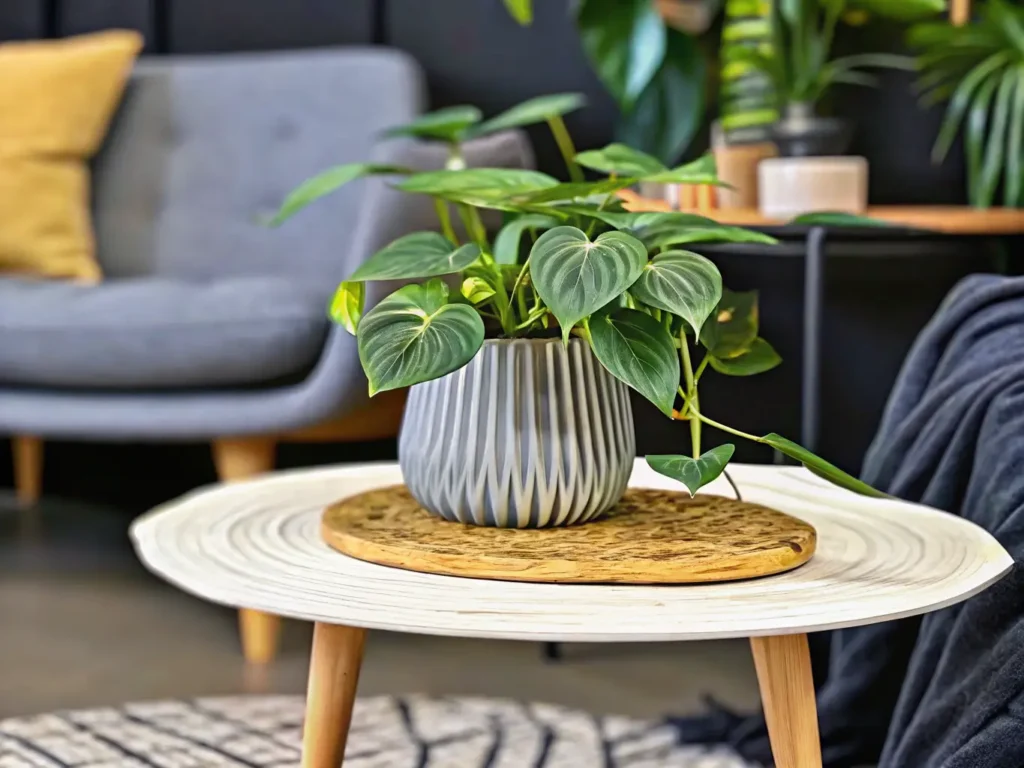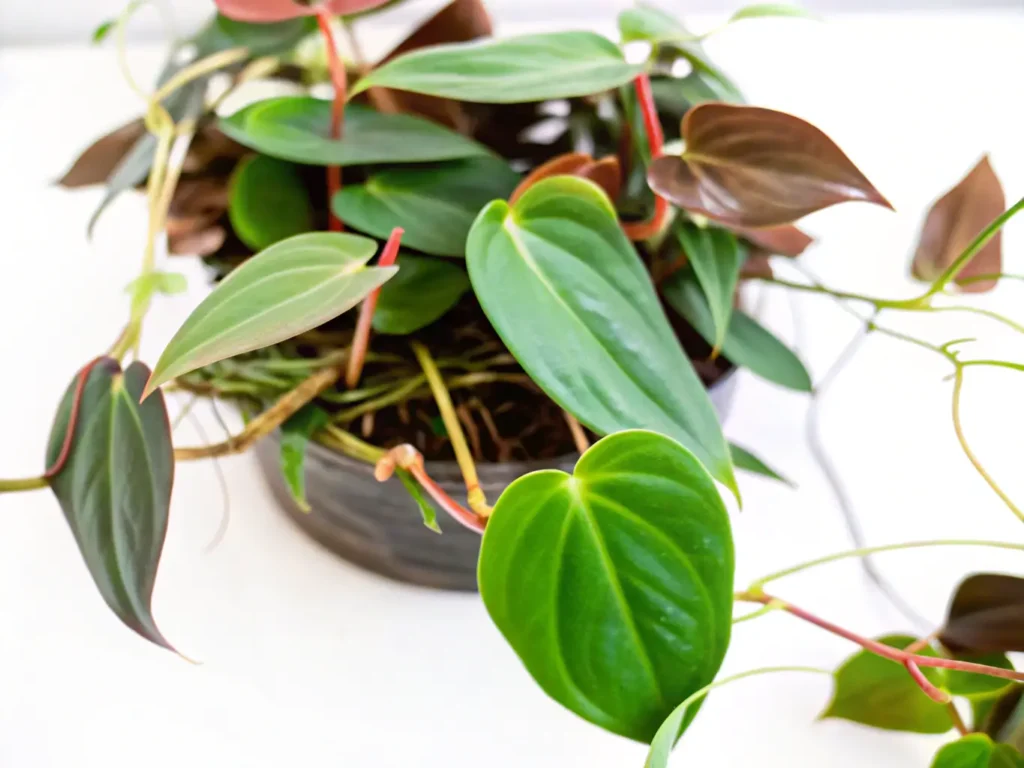
I’m a huge houseplant fan, and the philodendron micans is a total showstopper. Its velvety leaves grab attention, and its friendly care routine makes it easy to keep around. In this post, I’ll share how my mican plant adds life to my living space, plus tips on soil, light, and avoiding philodendron micans yellow leaves. You’ll also learn to spot unique features in this velvet leaf philodendron and see why folks call it the perfect indoor companion. Whether you’re brand-new to houseplants or you’ve got a sprawling green collection, you’ll find this info fun and (hopefully) super helpful.
Table of Contents
Introduction to Philodendron Micans
The Allure of Velvet Leaves
- This velvet philodendron feels soft—almost like you could wear it as a blanket.
- I love how the leaves shift color from bronze to deep green.
- If you peek underneath, you may catch a faint purple tone.
- That texture and tone give it a distinct vibe compared to standard green philodendrons.
I first discovered the micans philodendron through a friend who always boasted about its plush foliage. She told me it was a heartleaf variety, related to other philodendron hederaceum varieties, only amped up with a velvety shine. Once I got my hands on my own plant, I understood the hype.
A Brief History and Origin
This philodendron micana (another name for it) started in the humid tropics of Central and South America. Over the years, hobbyists brought it indoors worldwide—making it a treasured houseplant. Despite its lush background, it’s surprisingly relaxed about temperature and humidity, so you don’t need a greenhouse to keep it happy.
Distinctive Features of the Micans Variety
Understanding the Heartleaf Variation
Many philodendrons share that signature heartleaf structure. However, the mican plant stands out with its velvety surface and color-shifting leaves. As new foliage appears, it might look bronze or reddish. Then, it morphs into a deep green—almost magical to watch.
- New leaves: often bronze or pinkish.
- Mature leaves: rich, dark green.
- Texture: fuzzy sheen under decent lighting.
- Growth habit: perfect for hanging baskets or climbing poles.
Color Transitions and Leaf Texture
The biggest reason I adore the micans philodendron? That plush, velvety texture! Touching the leaves feels like stroking a fuzzy sweater. Sunlight highlights subtle shimmers, making it an indoor vine plant that entertains all day long.
Light and Temperature Requirements

Ideal Placement and Lighting Conditions
The velvet philodendron prefers bright, indirect light. Too much direct sun can scorch the leaves or even cause philodendron micans yellow leaves. Meanwhile, dim corners might slow growth but won’t kill it. I like to place mine near a window, but I hang a sheer curtain to avoid harsh rays.
- Rotate it every couple of weeks to keep growth even.
- Morning sun is often gentler than afternoon rays.
- Use grow lights if your space is extra dark.
Seasonal Temperature Fluctuations
A comfy indoor range around 65–80°F (18–27°C) is fine for this philodendron micans care routine. Freezing drafts can stun it, so keep it away from open windows in winter. In scorching summers, remember to water more often if the soil dries out faster.
Watering and Soil Conditions
Proper Watering Routine
Overwatering is the leading reason for philodendron micans yellow leaves. I check the top inch of soil: if it’s dry, I water lightly—if it’s damp, I wait. When leaves droop, they might be thirsty, so a quick soil check is key.
- Water frequency: about once a week in summer, less in winter.
- Allow excess moisture to drain out.
- Watch for drooping as a sign it’s time to water.
Choosing the Right Soil Mix
A well-draining mix is essential. I blend standard potting soil with perlite or chunky bark for good aeration. If water sits too long, root rot may happen. Also, a pot with drainage holes is a must—stagnant water can become a real headache quickly.
Fertilizing and Promoting Optimal Growth

Types of Fertilizers for Velvet Philodendrons
I usually pick a balanced, water-soluble fertilizer. Feeding every month or two during active growth helps maintain that gorgeous, fuzzy foliage. Go easy: too much fertilizer can cause leaf discoloration issues.
- Dilute to half-strength.
- Check for brown leaf tips as an overdose clue.
- Some folks prefer organic compost or slow-release pellets.
Feeding Schedule and Techniques
I feed my micans philodendron more often in spring and summer when it’s sending out new leaves. In colder months, I back off. Also, I like to water the plant first, then apply fertilizer. That way, the soil is wet, preventing any potential root burn.
Pruning and Propagating Philodendron Micans
When and How to Prune Effectively
Pruning keeps this mican plant tidy. If you see spindly vines, snip above a leaf node. That nudge helps side shoots develop, making the plant bushier. Clean your scissors to avoid passing microbes from one plant to another.
- Best time: early spring (but anytime is okay for small fixes).
- Target leggy stems for a fuller look.
- Remove damaged leaves to keep the plant healthy.
Simple Propagation Methods
Chopping cuttings is easy. You need a stem with at least a couple of leaves and nodes. Place it in water to watch new roots appear in about two weeks. Then, gently pot the cutting once the roots look sturdy. This method expands your indoor vine plant collection fast.
Common Pests and Diseases
Identifying Early Warning Signs
Spider mites, mealybugs, or thrips can pop up if conditions are too dry or if other infested plants are nearby. Keep an eye out for yellowing, webbing, or small white cottony dots. Sometimes velvet philodendron leaves might show random spots—inspect carefully to confirm it’s not fungal or bacterial.
- Look under leaves and around stems for small moving dots.
- Separate any affected plant to stop pests from spreading.
- Yellow leaves could also be a watering or nutrition issue.
Organic and Chemical Treatment Options
A gentle shower with lukewarm water can knock off many pests. I also like using neem oil or insecticidal soap. If it’s severe, you might try a stronger product. For guidance on safe methods, check official resources like the EPA’s Safe Pest Control page.
Comparing Philodendron Micans with Other Philodendrons

Key Differences from Philodendron Brasil
A philodendron micans variegated version sometimes sparks confusion with Philodendron Brasil. The Brasil features bold lime-green stripes on smooth leaves. Meanwhile, the micans philodendron has a softer texture and gentler color patterns.
- Micans: velvety surface, color shifts, sometimes subtle variegation.
- Brasil: bolder color contrasts, glossy leaves.
- Textural difference: fuzzy vs. smooth.
Contrasts with Philodendron Hederaceum and Others
Regular heartleaf philodendrons often look similar but lack that fuzzy finish. If you ever meet a White Princess Philodendron, you’ll find dramatic white variegation—miles apart from the plush micans philodendron. Every philodendron variety brings a unique twist to your plant corner.
Styling Philodendron Micans in Your Home
Hanging Baskets and Climbing Poles
I’m a fan of letting the vines cascade from a shelf or basket, giving my home that cozy “jungle corner” vibe. For a more upright look, attach the stems to a moss pole. Keep ties loose to avoid damaging the soft vines.
Integrating with Other Houseplants
Combine the mican plant with chunkier foliage plants—like monstera or snake plants—for contrasting shapes. You can also place it near succulents if you prefer a quirky mix. The velvet philodendron complements an indoor garden décor scheme, adding a different texture among glossy or spiky neighbors.
FAQs About Philodendron Micans
Are philodendron micans hard to care for?
They’re generally considered easy to look after, as long as you provide them with bright, indirect light, let the top layer of soil dry out between waterings, and use well-draining soil. Meeting these basic conditions encourages healthy growth without much fuss and makes them beginner-friendly houseplants.
Do philodendron micans like to climb or hang?
They actually enjoy both modes of growth. You can allow the vines to dangle over the edges of a hanging planter, or guide them up a trellis or moss pole if you prefer a vertical look. This flexibility lets you style them however you want, and they’ll trail or climb happily either way.
Is philodendron micans a low light plant?
While they manage in low light, that usually leads to slower growth and smaller leaves. They thrive best in bright, indirect light, where you’ll see more robust foliage and faster leaf production. If you place them in a spot that’s too dim, they’ll survive, but you may notice leggier vines.
Can Philodendron Micans take full sun?
Prolonged, direct sun often scorches the leaves, causing browning or yellowing around the edges. A bit of gentle morning light is fine, but harsh midday rays can do more harm than good. If your plant is receiving intense sunlight, move it slightly back or shade it to prevent burnt leaves.
Is Philodendron Micans toxic to pets?
Unfortunately, yes. It has calcium oxalate crystals that can upset your furry buddies if they nibble. Stash it in a safe spot out of reach, especially if you live with a curious cat or dog.
Conclusion

To me, the velvet philodendron remains a houseplant gem. Its color transitions, soft texture, and compatibility with indoor living make it hard to resist. I still remember the first time I felt those fuzzy leaves—I was hooked for life.
Follow these tips for philodendron micans care: moderate watering, partial shade, and occasional fertilizer during peak growth. Keep an eye out for philodendron micans yellow leaves, which can be a handy cue that something’s off in your routine. With the option of a philodendron micans variegated version, your plant hobby could get even more exciting.
From beginners to experts, everyone seems to appreciate its relaxed nature. So if you’re seeking an indoor vine plant to jazz up your space, the micans philodendron might be your new leafy buddy. Time to grab those scissors—propagation season awaits!
